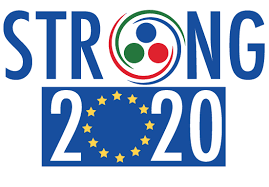Jet substructure techniques are now routinely used in collider phenomenology. This specialised workshop evolves around a recent tool called the Lund Jet Plane(s). The main idea is to use the Cambridge/Aachen clustering technique (i.e. a roughly angular-ordered clustering tree) to associate a kinematic structure, akin to the Lund planes used in resummations and in Monte Carlo generators, to a high-energy jet. This structure can then be used in a wide range of applications. The goal of this workshop is to provide a theoretical and experimental overview of these applications and their connections with other tools in the field. A special emphasis will be put on recent developments and on discussions of future potential directions. This includes the following list of topics:
- Constraints on Monte Carlo generators from Lund plane density measurements
- Tagging of light-quarks vs. gluon
- Boosted V/H/t vs. QCD jets discrimination
- Mass effects in the Lund plane (dead cone, heavy flavor tagging)
- Applications to BSM searches
- Studies of the quark-gluon-plasma in heavy-ion collisions
- Jet substructure measurements (generalised angularities, groomed observables,..)
- Machine learning tools (e.g., LundNet, ParticleNet, GNN)
- Lund-plane observables to constrain parton showers with N^kLL resummation
- Strategies to mitigate quark/gluon fraction issues.
- Possible αs extractions with jet substructure.
The workshop will consist of afternoon talks. One of the key aspect of the workshop will be to leave time for common discussions and work between theorists and experimentalists.
Organising committee:
- Cristian Baldenegro (LLR, co-chair)
- David d’Enterria (CERN, co-chair)
- Raghav Kunnawalkam Elayavalli (Vanderbilt)
- Matt LeBlanc (CERN)
- Simone Marzani (Università di Genova)
- Matt Nguyen (LLR)
- Jennifer Roloff (BNL)
- Alba Soto Ontoso (CERN, co-chair)
- Gregory Soyez (IPhT Saclay, CERN, co-chair)
- Marta Verweij (Utrecht)
